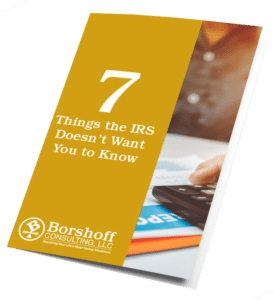It’s important to understand what capital assets are, how to calculate capital gains and losses, and what this means for your taxes. Short-term capital gains and long-term capital gains are treated differently. The government encourages taxpayers to have long-term investments so if you own your capital assets for over a year, the tax rate only goes up to 20% whereas short-term capital gain taxes are the same as that of ordinary income. Knowing this will help you manage your capital gains taxes.
You can minimize the tax you owe on capital gains by offsetting gains with losses, holding on to capital assets for over a year, carrying capital losses over to the next year, choosing the right cost-basis, and using tax-advantaged accounts like 401(k) plans and 529 college savings accounts.
What is a capital asset?
Capital assets are investments (significant pieces of property) such as real estate, automobiles, jewelry, stocks, bonds, mutual funds, fine art, home furnishings, antiques, and other collectibles. For businesses, a capital asset is an asset with a useful life that is longer than a year and that is not intended for sale in the regular course of the business’s operation.
Assets that should not be considered capital assets include patents (inventions, models, designs, secret formulas, processes, etc.), copyrights, musical or artistic compositions, letters/memos (or anything similar such as drawings, photographs, speeches, etc.), business inventory, and depreciable business property.
What are capital gains?
A capital gain is the profit you receive from selling a capital asset for more than you paid for it. A capital gain cannot be realized until you sell the asset. A capital gain happens when you sell an asset for more than your adjusted basis. Check out Publication 551: Basis of Assets to learn how to calculate your adjusted basis.
Selling Price – Purchasing Price = A Positive Amount (A Capital Gain)
What are capital losses?
A capital loss is realized when the value of a capital asset is decreased, meaning you received less when selling the asset than the amount you paid for it. A capital loss happens when you sell an asset for less than your adjusted basis.
Selling Price – Purchasing Price = A Negative Amount (A Capital Loss)
What are long-term and short-term capital gains?
Capital gains are a form of taxable income. These gains are broken down into two categories: short-term and long-term. Short-term capital gains occur when you own the capital asset for one year or less. Long-term capital gains occur when you own the asset for more than one year.
What is short-term capital gains tax?
Short-term capital gains tax is the tax on capital gains for capital assets held for one year or less. Short-term capital gains are taxed as ordinary income for the 2019 tax year. That means if you fall under the tax bracket of 22% for the 2019 tax year, your short-term capital gains will be taxed at 22%.
To determine your filing status, check out the 2019 tax rates for all filing statuses. Once you have determined your tax rate, you can use that rate to calculate the tax you owe on any capital gains. Capital gains taxes are progressive just like income taxes.
What is long-term capital gains tax?
Long-term capital gains tax is the tax on capital gains for capital assets held for more than a year. You receive a more favorable tax rate for long-term gains because long-term investments are encouraged by the government, so investors get more tax benefits. Here are the rates for long-term capital gains for the 2019 tax year.
2019 Tax Year Rates for Long-Term Capital Gains
Long-Term Capital Tax Rates for 2019 Tax Year | Single Filing Status | Married Filing Jointly Filing Status | Head of Household Filing Status | Married Filing Separately Filing Status |
|---|---|---|---|---|
0% | $0 – $39,375 | $0 – $78,750 | $0 – $52,750 | $0 – $39,375 |
15% | $39,376 – $434,550 | $78,751 – $488,850 | $52,751 – $461,700 | $39,376 – $244,425 |
20% | Over $434,550 | Over $488,850 | Over $461,700 | Over $244,425 |
Here’s an example: If you purchased a car for $5,000 and sold it for $10,000, your capital gain would be $5,000 ($10,000 less $5,000). If you fall into the MFJ (married filing jointly) filing status and you jointly make $100,000, your long-term capital tax rate would be 15%. The tax you would need to pay would be $750 (15% of the $5,000 profit you had). Your end profit would be $4,250 ($5,000 profit less $750 taxes).
Long-Term Capital Tax Rates for 2020 Tax Year | Single Filing Status | Married Filing Jointly Filing Status | Head of Household Filing Status | Married Filing Separately Filing Status |
|---|---|---|---|---|
0% | $0 – $40,000 | $0 – $80,000 | $0 – $53,600 | $0 – $40,000 |
15% | $40,001 – $441,000 | $80,001 – $496,000 | $53,6001 – $469,050 | $40,001 – $248,300 |
20% | Over $441,500 | Over $496,600 | Over $4469,050 | Over $248,300 |
What does cost basis mean?
Capital gains are the difference between the cost basis of an asset and the ultimate sales price, and vice versa for capital losses. Cost basis is what you paid for the capital asset plus certain allowable costs of maintaining and selling the asset. This is especially applicable in real estate.
An example would be is you purchased a capital asset for $400,000, and it cost you $100,000 to maintain and sell it. If you sold the asset for $550,000, your capital gain would be $50,000 ($550,000 less [$400,000 + $100,000]).
Selling Price –(Purchasing Price + Maintenance and Selling Costs) = Capital Gain
How can I minimize the taxes on capital gains?
- Use capital losses to offset the taxes on capital gains.
Your capital losses can help offset your capital gains so you can pay less capital gains tax. The difference between your capital gains and your capital losses is your net capital gain. If you have more losses than gain (if your capital gains less your capital losses is a negative number), you may deduct the difference on your tax return, up to $3,000 ($1,500 for married couples who file separately).
- Keep your capital assets for more than a year.
There are clear advantages to having long-term capital assets versus short-term ones. The tax rates are considerably more favorable, so hold on to your investments as long as you can so that you can count them as long-term capital gains.
Remember: Short-term capital gains get taxed in the same income brackets that you use for your annual tax returns; whereas long-term capital gains at the most get taxed at 20%. That’s a huge difference so hold out as long as you can before selling.
- Carry over leftover capital losses for next year.
Since there is a limit on the amount of capital losses you can claim in the year ($3,000 or $1,500 if you are married filing separately), the government allows you to carry over any excess to the next tax year. You will have the same limitations, but if you don’t have $3,000 worth of capital losses this year, the carryover amount will help you offset your capital gains taxes next year.
- Choose the best cost basis.
When you purchase shares in the same company or mutual fund at different times at different prices, you will have to choose your cost basis for the shares you sell. Most investors use the FIFO (first-in, first-out) method as their cost basis, but there are four other ways to measure your cost basis. They are LIFO (last in, first out), dollar value LIFO (last in, first out), the average cost (for mutual fund shares), and specific share identification (Weltman, 2019).
- Use tax-advantaged accounts.
Accounts that have tax advantages include 401(k) plans, certain retirement accounts, and 529 college savings accounts. Most investment accounts such as these grow tax-free or tax-deferred. That means you don’t have to pay capital gains tax if you sell investments within these accounts. With some accounts, such as the 529 college savings accounts, you do not have to pay taxes, but on traditional IRA accounts and 401(k) plans, you will need to pay taxes when you take distributions out during your retirement (Orem, 2020).
Are there any exceptions to the capital gains tax rules?
There are two exceptions you should be aware of. First, while the capital gains tax rates apply to most capital assets, there are some exceptions. Collectible assets (coins, precious metals, antiques, and fine art pieces) are generally taxed at 28% for long-term capital gains; the rates are the same for short-term capital assets that are collectible assets.
The second exception is for the net investment income tax. Some taxpayers will owe an additional 3.8% that applies to whichever is smaller – your net investment income or the amount by which your modified adjusted gross income exceeds the amounts listed below (Orem, 2020).
These are the thresholds that may cause investors to be subject to the additional 3.8% tax:
- Single or head of household: $200,000
- Married filing jointly: $250,000
- Married filing separately: $125,000
Conclusion
When making your investment strategy, keep capital gains taxes in mind, and try to hold on to investments for over a year so that they will be classified as long-term capital gains, which have more favorable tax rates.
Not sure whether you need to pay capital gains tax or not? When in doubt, schedule a consultation with a tax specialist. Check out these steps to finding a tax accountant if you don’t already have one. Do you need tax help or financial assistance? We can help you with every part of your taxes!
We specialize in tax returns, financial planning, and more! To see how we can help you out with your tax returns or finances, contact us today! Borshoff Consulting can help you with one-on-one audit assistance, support, and representation. You can trust Indiana’s tax expert!





